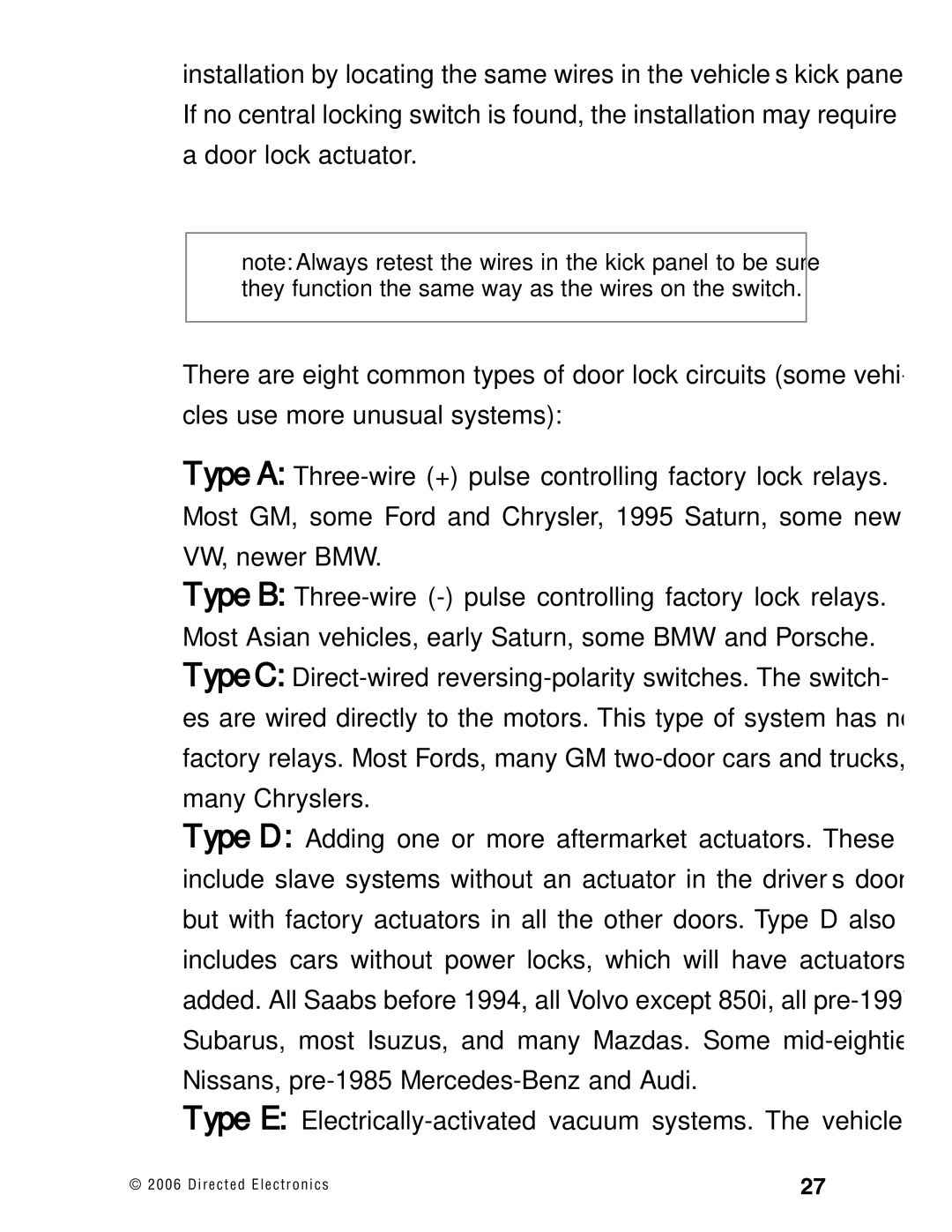
installation by locating the same wires in the vehicle’s kick panel. If no central locking switch is found, the installation may require a door lock actuator.
note: Always retest the wires in the kick panel to be sure they function the same way as the wires on the switch.
There are eight common types of door lock circuits (some vehi- cles use more unusual systems):
■Type A:
■Type B:
■Type C:
■Type D: Adding one or more aftermarket actuators. These include slave systems without an actuator in the driver’s door, but with factory actuators in all the other doors. Type D also includes cars without power locks, which will have actuators added. All Saabs before 1994, all Volvo except 850i, all
■Type E:
© 2 0 0 6 D i r e c t e d E l e c t r o n i c s | 27 |
